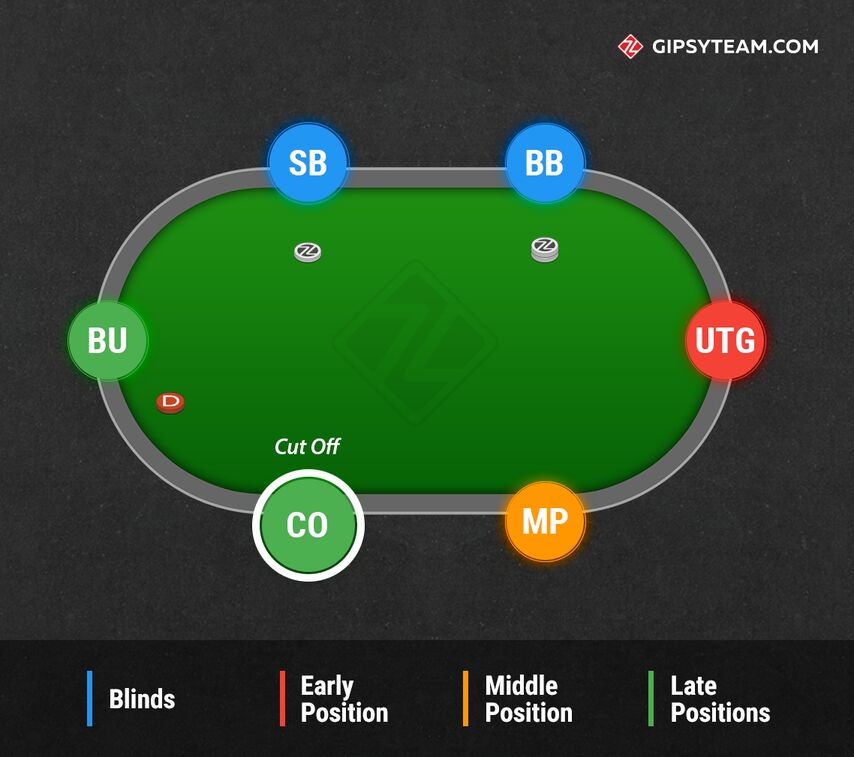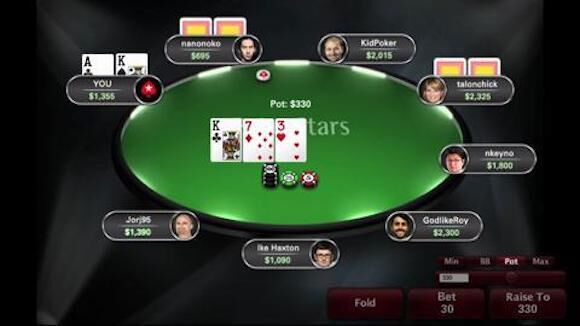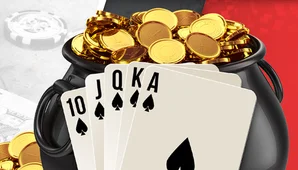The more you play poker, the more you will get familiar with the various hand names and terms used for various positions in poker. Most people know the basic names, such as the button, big, blind, small blind, and under the gun. However, there is a commonly used name for virtually every position at the table, and one of those terms is called the cutoff.
What is the Cutoff in Poker

The cutoff is the name that has been given to the position on the table that is to the direct right of the button. The meaning behind the title is often said that someone who raises from this position is trying to “cut off” the button because if the button does fold, it would ensure that they are in position against anyone else in the hand. The cutoff is a very advantageous position to be in, and as a result, you should be prepared to be active in the cutoff. We’ll talk more about that in a bit.
There is another theory as to how this specific seat position got its name. Back in the old days, some games had a player cut the deck as part of the shuffling process. This position at the table, directly to the right of the button, was the one used to cut the cards after the shuffle.
The spot right before the cutoff is called the hijack, earning its name in a similar fashion. While the cutoff can “cut off” the button by raising just before them, the hijack can do the same, essentially “hijacking” control of the pot by raising just before the cutoff.
Which Games Use a Cutoff
It should also be noted that there is only a cutoff seat in games with a button and small-blind/big-bind. Games such as Razz, Seven Card Stud, and Seven Card Stud Eight or Better will base the order of the player’s actions based on the strength of visible cards (upcards). Therefore, there are no positions or seating draw luck as there are in Hold’em, Omaha, and Lowball games like 2-7 and A-5. If you want to learn more about these games, you can play low stakes on PokerStars to sharpen your skills.
Having aggressive players on your direct left and in positions like the cutoff and button can have a drastic effect on your win rate in these kind of games, but it is not as much of a factor in Stud games where the player who acts first could change every time a new card is dealt.
Strategy From the Cutoff
As stated above, the cutoff is one of the most preferred positions to have at the poker table. Therefore, you should be prepared to play a wide range of hands from there, and also be comfortable putting in three bets if needed to ensure that the button folds the hand. Say you have a hand like pocket tens or pocket jacks and there is a raise and call in front of you. This is a great candidate to three-bet from the cutoff, as the button will need to wake up with a big hand to challenge you, and you will often lose one player to and get to heads up in position. In addition, these hands are often fairly easy to play post flop, as you will know whether you need to step on the gas on low flops, or proceed with caution if over cards start to come out.

Every table has different players and different strategies, but playing in position is something that is universally preferred whether you are playing at a table full of amateurs, seasoned live professionals, or at tables at some of the top online sites in the game, such as AmericasCardroom, 888Poker, and GGPoker.
Tight Players in the Cutoff
Aggressive players will look to take advantage of the cutoff due to its useful position, but some tighter players should also be prepared to do the same. Tight players usually prefer to play small pots with low variance, and one of the best ways to do that is to play in position. Since the cutoff is the second-best position on the table outside of the button, it makes sense that some players who normally would play only premium hands might loosen up a bit, either calling with a wider range or raising with low suited connectors in hopes of hitting the flop and taking down the pot.
Using your image to your advantage is crucial at the poker table, and it can be even more important in late positions like the cutoff and button, Meaning that if you have a loose aggressive image and you three-bet in the cutoff with a monster hand, you are more likely to get action back at you and get paid off. Or if you are a tighter player, it’s important to throw in a bluff or two from later positions because you will often get people to overfold better hands because they think you have a tight image.
Staying one step ahead of your opponent is vital to your long-term success at the poker tables, so get comfortable playing all kinds of hands in position, and you will see immediate results.



















